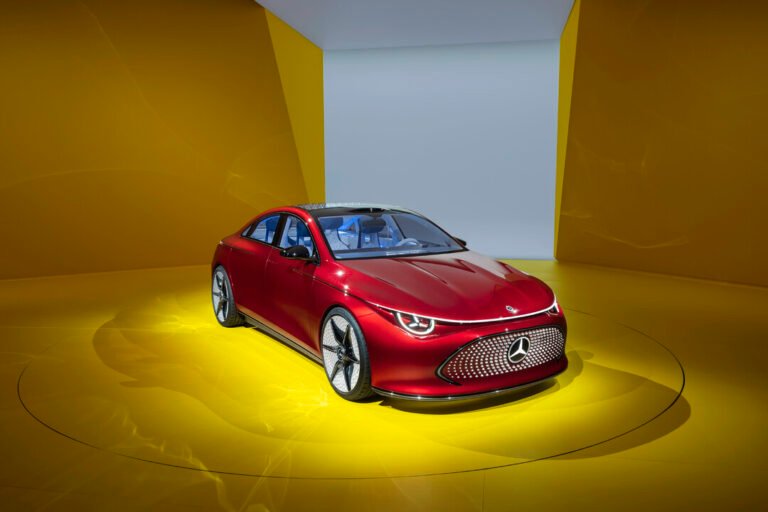1. Introduction
In today’s rapidly evolving automotive landscape, car rankings no longer rest solely on performance specs. Instead, they’re shaped by how well vehicles adapt to emerging technologies, environmental challenges, and changing consumer values. This updated guide dives into the trends redefining how cars are ranked and what that means for buyers and automakers alike.
2. Car Rankings at a Glance: What’s Shaping the Future
IMD’s Future Readiness Rankings
According to the 2024 IMD Future Readiness Indicator, Tesla remains firmly in first place for long-term competitiveness, followed by BYD, Volkswagen, Stellantis, and Hyundai. These rankings reflect leadership in innovation, adaptability, and strategic direction.
3. Trend Features Transforming the Industry
Electric Vehicle Momentum & Usage Patterns
Battery electric vehicles (BEVs) continue to gain traction, but the pace of adoption varies globally. In the U.S., consumers still prefer fossil fuel vehicles (67%), while interest in EVs stands at under 10%. In contrast, markets like China show parity between gas and electric preferences. EVs remain attractive for lower fuel cost and environmental concerns, but infrastructure gaps and range anxiety remain hurdles.
Advanced Driver Assistance & Autonomous Driving
Many modern cars feature Level 2 ADAS, offering hands-free highway driving and driver assistance like lane centering—over 50% of new cars in the U.S. now include this. Notably, Mercedes’ Drive Pilot (Level 3) is available in select models in California, Nevada, and Germany, marking early commercial introductions of conditional autonomy.
AI & Generative Tech in Your Car
The integration of AI and language models is shifting automotive user experiences. At CES 2024, Mercedes-Benz showcased their MB.OS virtual assistant, and Volkswagen announced integration with generative AI for seamless voice interactions. Academic research also explores how AI can deliver highly personalized in-car experiences.
Infrastructure, Sustainability, and “Autobesity”
While EV demand rises, sustainability and urban design continue to be challenged by “autobesity” the trend of cars growing in size and weight. In the U.S., SUVs and pickups made up over 75% of new car sales in 2024, compared to 38% in 2009. This trend contributes to environmental concerns, pedestrian safety, and urban congestion.
4. Deep-Dive Analyses
Global Consumer Preferences & Subscription Models
The 2024 Global Automotive Consumer Study reveals shifting preferences: consumers increasingly weigh price, quality, and performance in buying decisions. Younger consumers—especially in India—express strong interest in vehicle subscription services, seeking flexibility and predictable costs. However, U.S. consumers remain cautious due to concerns over availability and losing ownership value.
Innovations from Shows like CES
CES 2024 was a launchpad for futuristic automotive tech: AI voice assistants (MB.OS, AI integration), concept EVs like Honda’s Saloon, and even electric vertical-takeoff flying cars like XPeng’s eVTOL and Hyundai’s Supernal S-A2 (production envisioned by late 2020s).
Modular & Shared Mobility Futures
“Autonomous mobility on demand” promotes car-sharing and ride-on-demand models as a sustainable alternative to private ownership, aiming to reduce congestion and emissions. Research into Modular Autonomous Vehicles (MAVs) highlights flexible vehicle designs adaptable for passenger or cargo use offering scalable, efficient mobility solutions.
5. Putting It All Together: Updated Car Rankings Considerations
When ranking future-ready cars in 2025, consider:
-
Innovation leadership: Does the brand lead in electrification, AI, or connectivity?
-
Consumer traction: Are buyers actively choosing their vehicles?
-
Infrastructure & ecosystem: Does the company support charging networks, subscriptions, or shared mobility?
Leaders:
-
Tesla – dominant in EV innovation, AI integration, and readiness.
-
BYD – strong in EV growth and expanding globally.
-
Volkswagen, Hyundai, Stellantis – innovating across EVs, ADAS, and connected features.
Challengers:
-
Automakers aggressively pursuing FCEVs, hydrogen tech, or modular designs.
-
Startup or concept-focused brands experimenting with flying cars, modular mobility, or AI-first UX.
6. Expert Tips for Car Buyers Based on Trends
-
Match strategy to needs: Prioritize safety tech (e.g., Level 3 autonomy), AI features (e.g., voice assistants), or eco-options (EV/FCEV) depending on your priority.
-
Think long term: Choose brands investing in charging infrastructure, data services, or transferable subscriptions.
-
Stay flexible: Subscription or modular platforms offer adaptability as your mobility needs evolve.
-
Watch for regulators: Governments may penalize oversized vehicles smart urban buyers lean toward efficient designs.
7. Conclusion
Car rankings in the next few years will increasingly reflect a vehicle’s adaptability to electrification, intelligent systems, consumer behavior shifts, and sustainable design. The future leaders like Tesla, BYD, and innovators among legacy automakers are the ones blending technology, trust, and ecosystem support. For buyers, aligning your purchase with emerging trends will help ensure your vehicle remains relevant and future-ready.
FAQs
Q1: What defines car rankings today?
Rankings now hinge not just on specs but on EV readiness, AI capabilities, infrastructure support, and mobility innovation.
Q2: Which automakers lead future-ready rankings in 2024–25?
Tesla ranks first, followed by BYD, Volkswagen, Stellantis, and Hyundai, according to industry studies.
Q3: Are AI features in cars worth prioritizing?
Yes. AI assistants enhance safety, personalization, and overall user experience trends expected to define the next wave of vehicle usability.
Q4: Should buyers consider subscription services instead of ownership?
It depends. Younger or urban buyers may prefer flexibility and predictability, but ownership still appeals to many, especially where subscriptions face price or availability concerns.
Q5: Do flying or modular cars influence rankings now?
Not yet in mass rankings, but they signal future innovation. Keep an eye on these emerging categories as they may become ranking factors in the near future.
